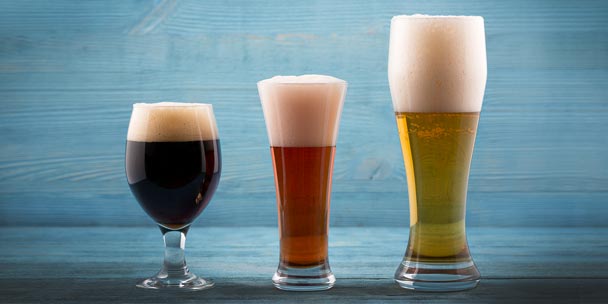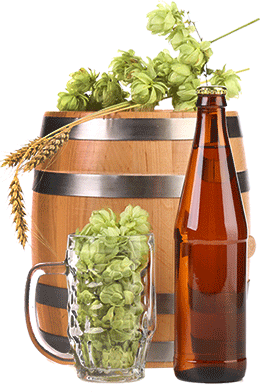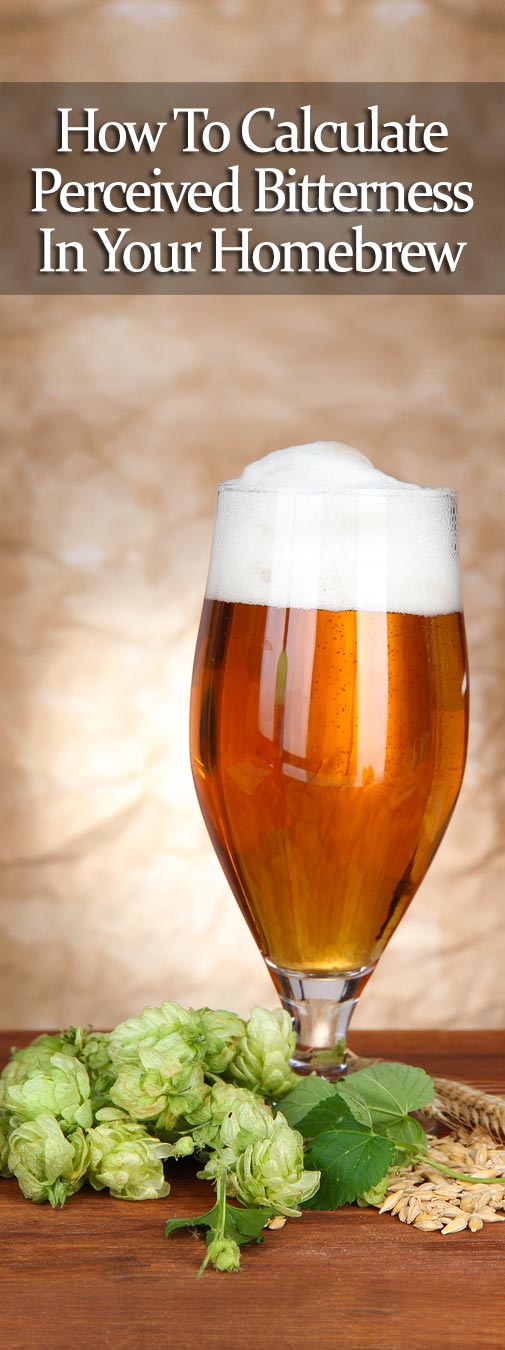
One of the hardest facets of beer flavor to achieve is balance. Balancing the different flavors of beer is absolutely necessary to create a complex but drinkable beer. A failure to balance flavors will make a beer seem one-dimensional or, worse, undrinkable.
In this article, we’ll discuss how to strike a balance between the bitterness of the hops and the relative sweetness of the malt. While this is only one aspect of the overall balance of a beer, it is arguably the most important and the one which we have the best ability to predict with math.
The BU:GU Ratio

In actuality, there is a lot more to balancing beer than just malt flavors versus hop bitterness, but we tend to simplify the problem down to this balance for a few simple reasons:
- IBUs make a handy placeholder for “hop flavor”, while original gravity makes a handy, if somewhat unreliable, placeholder for “malt flavor”.
- This gives us a one-to-one indicator of the balance.
- It makes it easy to bring it to a simple ratio.
Ray Daniels, in his book Designing Great Beersbreaks this ratio down to a very simple Bitterness Units to Gravity Units ratio, commonly noted as BU:GU. The Bitterness Units are just the calculated IBUs of the beer. The Gravity Units are what you get when you subtract one from the Original Gravity and then multiply by 1000.
For instance, let’s say I’m making a pale ale with 25 IBUs and an Original Gravity of 1.050. The BU:GU Ratio would be calculated as follows:
For an idea of how this benchmarks, let’s take a look at how the 2008 BJCP Guidelines would benchmark. The acceptable ranges for Style Category 10A American Pale Ale are as follows:
- OG: 1.045 – 1.060
- FG: 1.010 – 1.015
- IBU: 30 – 45
Taking the middle of the range for IBUs and OG will give you a decent benchmark with which to work, so let’s try 1.052 and 37 IBUs.
This is the basic way to get a sense of the bitterness balance of your beer, and it is used by a lot of homebrewers as a go-to method. Assuming you are using traditional ingredients in your recipe, this will give you a good benchmark with which to check your beer against the style.
Adding Apparent Attenuation
Unfortunately, The BU:GU ratio by itself does not take into consideration the residual sweetness caused by unfermentable sugars. When you are comparing to existing style guidelines and using traditional ingredients, this is not a huge deal. However, if you are not brewing specifically to style or are using nontraditional ingredients, you will need to take into consideration the effect this may have on your beer. To do that, we need to bring Apparent Attenuation into the picture.
If you are brewing to a specific style, you can once again leverage the style guidelines to pull out the typical apparent attenuation of the style and adjust the equation to pull that number in. This will adjust your Perceived Bitterness (PB in the equation) higher or lower compared to the average for that style.
Where RAA is the Apparent Attenuation of your recipe and SAA is the typical Apparent Attenuation of the style. This formula will calculate the BU:GU ratio and then increase the number if the perceived bitterness will be higher and lower the value if the perceived bitterness will be lower.

The advantage of doing this is that it will help you to illustrate how the apparent attenuation can affect how you perceive bitterness even if your IBUs and gravity units stay exactly the same.
An example:
Let’s resurrect our previous example and add apparent attenuation. If you’ll remember, our pale ale finished with a BU:GU ratio of 0.71. Let’s assume the final gravity finished at 1.010, which is the lower end of the spectrum for the style.
First, we calculate the apparent attenuation using this equation:
- RAA = (OG-FG)/(OG-1)
- RAA = (1.050-1.010)/(1.052-1)
- RAA = .040/.050 = .80 or 80%
Using this same equation, we can benchmark the style:
- SAA = (1.052-1.013)/(1.053-1)
- SAA = .039/.053 = .735 or 73.5%
If you are not brewing to style, you can leverage a style similar to what you’d like to have or you can use the average apparent attenuation of all of the BJCP styles, 0.7655.
So, the perceived bitterness equation for this batch would be as follows:
Compare this to the BU:GU of .6, and you’ll see that because more of the sugars fermented out, the perception of the beer will be a little drier. By contrast, if the final gravity had ended a little higher at 1.013, this number would be slightly different.
You can tell how far the perceived bitterness strays from the style by how far the number differs from the BU:GU ratio. The perceived bitterness of this recipe would be closer to what the average would be for the style than our first example.
That is not to say that the first recipe is out of style. It is within the style guidelines, but the end result will fall further on the bitter end of the spectrum than the “average” American pale ale.
Perceived Bitterness Calculator
Now that we’ve broken down the manual process for calculating the perceived bitterness of your brew, here is a calculator to help with the process. In the below calculator, we will use the estimated IBUs, Original Gravity, and Final Gravity to calculate perceived bitterness using the BU:GU Ratio from Ray Daniels and then using the formula to also factor in the average apparent attenuation of all BJCP styles.
Using This to Brew at Home
This tool isn’t necessary for most brewers, but will come in handy for you if you are creating a recipe from scratch or if you are working to refine a recipe to your palate. For instance, let’s say you have a favorite pale ale recipe, but you want to fine tune the balance. The last time you brewed it, you found that it was a bit too sweet and you want to cut that down a little bit.
You could brew it again and add hops, mash at a lower temperature, or reduce the amount of crystal malt, but how many degrees do you lower it, and how much malt should come out? Tinkering with your recipe and using software or calculations to predict the IBUs, OG, and FG can give you a new perceived bitterness number, and that number will give you a better idea of how your changes will affect the end result of the beer. It might still take some trial and error, but the number will help you get closer to your target the first time, and will help you refine it to the perfect beer in fewer attempts.
from Kegerator